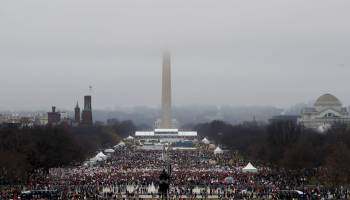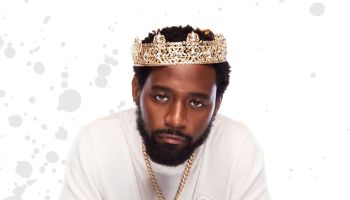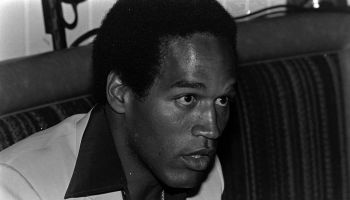At a town hall meeting in Washington, D.C. Wednesday, a packed room of hundreds of concerned adults—mostly African-American—sought answers about the increased reports of Black girls going missing in the city. One young woman stood at the mic and broke down in tears as she expressed her safety concerns.
“We can’t do nothing because we got to keep worrying about somebody tryna take us,” she said in a video posted by Fox 5. “We can’t even live our life without somebody tryna put they hands on us.”
City officials told constituents that there was no increase in missing Black girls, debunking the idea that this is a rising trend. Authorities say the sudden hypervisibility was an effect of the police department’s increased use of social media to spread the word about these cases. In fact, of the 501 juveniles reported missing this year, only 22 of those cases remain open, according to the the Metropolitan Police Department’s website. Many of the kids are runaways who go missing multiple times, the acting Police Chief Peter Newsham said, according to Fox 5, although this has been disputed by community leaders.
While there has not been an uptick in missing Black girls in D.C., this doesn’t excuse the fact that there is still a disproportionate amount of Black girls and boys who are missing in the nation’s capital. Currently, the D.C. police department’s database lists at least 12 names of youth (under the age of 18) who went missing this year. Their cases are still open, according to the site. Six of these individuals are boys and six are girls. They are all Black.
These cases have not been covered aggressively— especially in national news—and it calls into question why. For many Black people, the answer seems as obvious as it is upsetting: These young Black lives are not as important as white children’s.
Furthermore, if there was not social media, we would not know of their disappearances—in the absence of Amber alerts or extensive news coverage, there has been a deafening silence. Parents at the meeting were told to reach out to their lawmakers if they wanted the Amber alert system reformed, but the fact that the system doesn’t currently spread information about these children’s whereabouts is another sign that the authorities have failed them.
This past weekend, as mainstream (read: non-Black) media were shamed into covering the disappearances, much of their coverage focused on debunking the fact that there is an increase in missing lives. Few thought to explore why one missing Black life was not reason for coverage.
Not all of these stories can be dismissed as runaway cases. One of the most saddening unsolved cases is Relisha Rudd, who disappeared from a D.C. homeless shelter in 2014. It is believed Kahlil Tatum, a maintenance worker, kidnapped her. Police relaunched a search for the girl last April, but did not find her. There were initial reports about Relisha on MSNBC by Al Sharpton and on CNN in 2014, however only local media like the Washington Post and DCist, and Black news outlets such as The Root.com, continued to cover case developments well into 2016. Rudd is an example of how the mainstream news around Black missing children remains underreported, if the issue is reported on at all. Had Rudd’s death been met with the same amount of concern and outrage when white children go missing, her life could have been saved or whereabouts found by now.
The racial media bias is very real because cases like Rudd and other missing D.C. children are not an anomaly. Alarming figures show that Black children are missing at a disproportionate rate compared to white children. In 2016, 36.7 percent of missing American children were Black and 56.7 percent were white, according to data compiled by the Black and Missing Foundation. Keep in mind that only 14.1 percent of American children in 2010 were Black, and 53.7 percent were White, according to Child Trends Data Bank. With such disproportionate numbers, it is even more distressing that the media fails to report on the disappearances of Black children.
Ohio State University researchers focused on this disparity in a 2010 study “Racial and Gender Representations of Missing Children Cases.” The authors found that the media’s coverage of Black missing children did not accurately represent the FBI’s reports on this demographic between the years of 2005 and 2007. A TV news sample showed African-American children were 19.5 percent of missing children reports; meanwhile, the FBI reported that African-Americans were 33.2 percent of missing children. This means 13.7 percent of Black missing children were invisible to the media.
This is a national concern, not an unique issue to D.C. New York City has been reporting on similar issues.
It is also dangerous to push the narrative that teen girls are just runaways who make it back home, because once they step out on their own, they are vulnerable to other social ills. There is a correlation between runaways and sex trafficking, according to data reported by the National Center for Missing and Exploited Children. One out of six children reported to the organization in 2016 were likely sex trafficking victims. And 86 percent of these likely victims were reportedly in the foster care system or in the care of public services during the time that they ran away.
The young girl who spoke out in tears at the town hall last week, she doesn’t deserve to feel the way she does. If she goes missing, she knows that the public will have less concern for her life because she is Black. If the purpose of the media is to be the voice for those who are voiceless, than the media has to end the erasure of these stories of Black missing children. Some shame social media users for spreading false information, but if mainstream media had done their jobs to keep up with this issue, then perhaps social media users—who are not trained reporters or editors—would not have to act on impulse and spread unverified information.
In the end, the Internet’s mobilization may save some of these children’s lives and get them home. Because of the outrage and attention brought to these stories, D.C. Mayor Muriel Bowser created a taskforce to assure the safety of the missing children on Friday. There will be six initiatives rolled out. One will include increasing the number of D.C. police officers assigned to the Children’s and Family Services Division and the expansion of the D.C. missing person’s webpage and social media messaging.
There has been much talk about intersectionality within the woman’s rights movement. However those who continue to show up for Black girls—and Black boys—tend to be our own. One photo of the attendees at the forum organized by the city is a stark reminder of this. Nearly every face in the room was a Black one.
Black children need everyone’s protection, investment and upliftment—just as all children do. The idea that it takes a village should not be racially selective. Perhaps this was the wake-up call to the media, elected officials and authorities to take action in speaking out for these youth, and protecting the safe spaces they desperately need to call home.
The Dangerous Way The Media Is Failing D.C.’s Missing Girls was originally published on hellobeautiful.com















